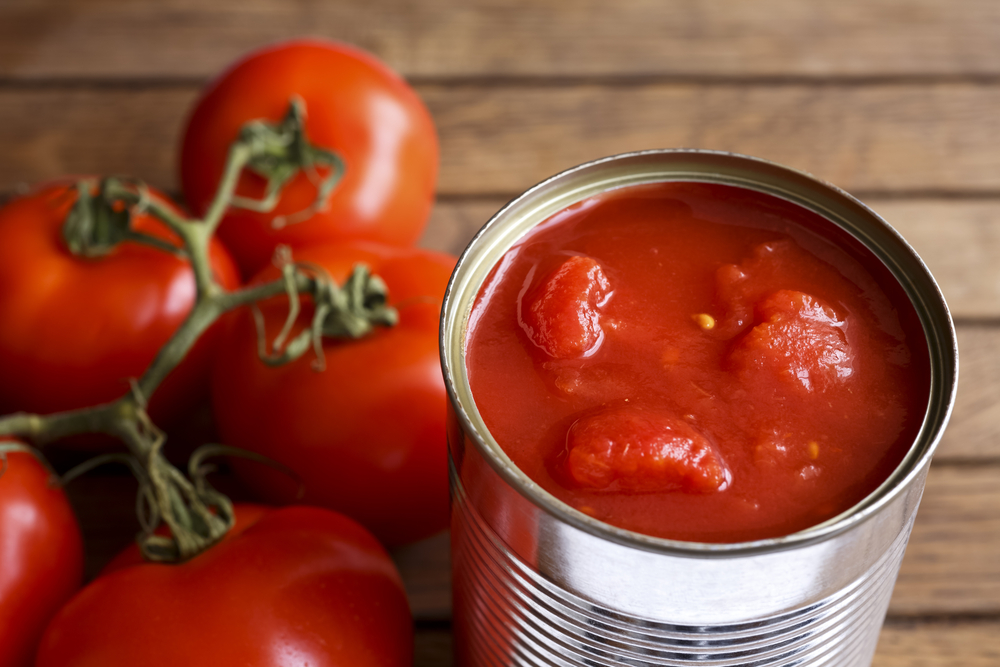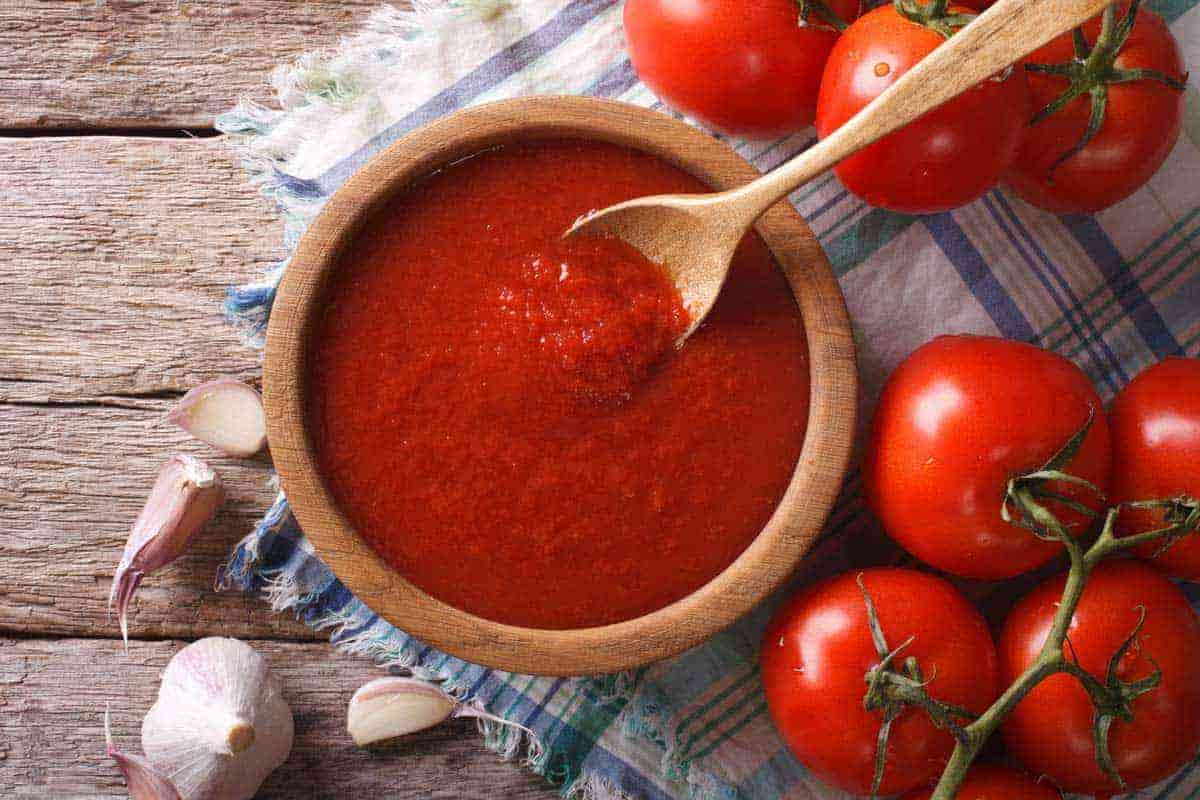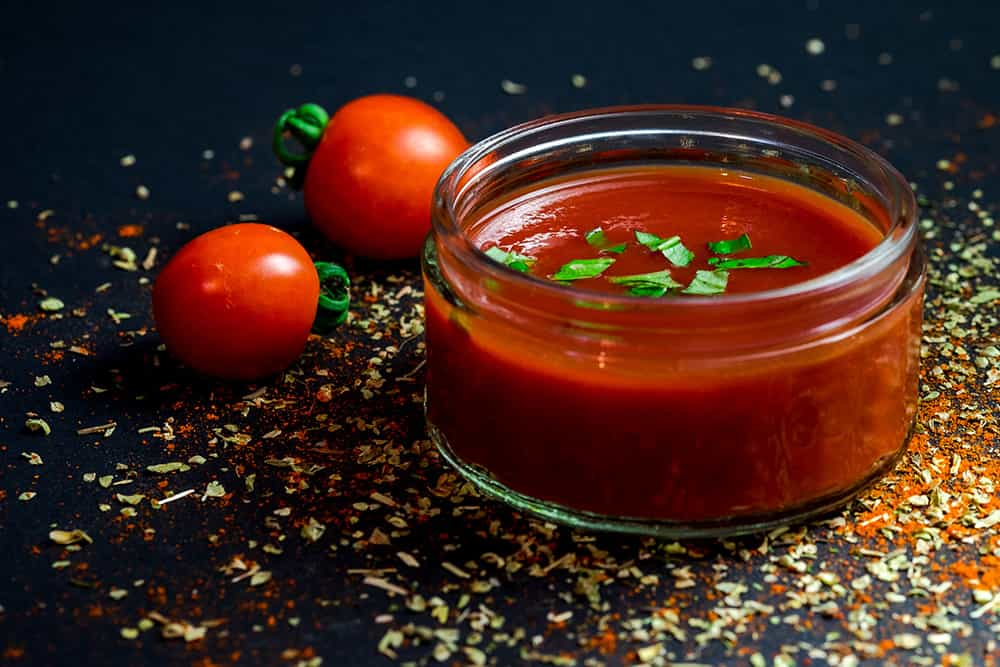There are various substitute products for times you do not have access to canned tomato sauce and we are going to provide you with some fruitful information regarding these products that you didn’t know before.
Are you out of tomato sauce and want to put off going to the grocery shop as long as possible? You are fortunate in that you probably have anything in your refrigerator or pantry that can serve as a suitable substitute for it. Let’s take a look at some possible alternatives to tomato sauce: tomato paste and canned tomatoes are the two finest options, but ketchup and tomato soup can be used in certain recipes if you’re truly pressed for time.

Substitute Tomato Paste For Tomato Sauce
You are in luck if you already have a jar of tomato paste in your kitchen cupboard because this is the most suitable alternative to tomato sauce. Only tomato paste and water are required for this recipe.
Combine tomato paste with water in a ratio of 1 to 1, and stir the mixture until it is smooth. After that, season your “sauce” to your personal preference. Herbs, garlic, and onions are often used as seasonings when making tomato sauce. You might even discover that the sauce is improved by the addition of a few drops of olive oil or a little bit of sugar.
Cooking some garlic and onion in oil until they are soft will yield the most real flavor from your tomato sauce. Once you have achieved this, add the mixture of tomato paste and water and heat it through. Spending a little more time and effort to include a few additional components into your completed sauce will significantly improve both its flavor and its consistency.
Replace the fresh tomatoes with canned ones.
If you want to make your own tomato sauce out of a can of tomatoes, you can use whatever kind of canned tomatoes you have on hand, regardless of whether they are whole, stewed, diced, or crushed tomatoes. You can make your own tomato sauce out of a can of tomatoes.
First, open the can and pour out all of the liquid into a separate container. The tomatoes should be pulsed briefly in a blender or food processor at this point.

If the purée that you end up with looks to have more liquid than a traditional tomato sauce does, you may either reduce the mixture by cooking it down until it reaches the required consistency or drain off some of the surplus liquid. If you are going to use crushed tomatoes, reduce the sauce and cook it until it becomes somewhat thicker.
Some brands of canned tomatoes come with additional seasonings, while others do not. Test the flavor of your sauce and adjust it as necessary by adding more salt, oregano, basil, or any other spices that tickle your fancy. Heat your sauce for just long enough to warm it through if you want a fresh tomato sauce; however, cook it until it develops a dark color and thick texture if you want it to be more like the consistency of canned sauce. If the sauce becomes too thick, add some of the liquid that was set aside earlier.
Additional Alternatives to Tomato Sauce Include Ketchup and Tomato Soup
If you’re creating a pasta dish, none of the following substitutions will work in place of tomato sauce. However, if you’re using tomato sauce in a crockpot recipe, casserole, or something else that needs a little of tomato flavor, these substitutions will produce sufficient results. Try your hand at one or both of these alternatives.
You can substitute one cup of ketchup for one cup of tomato sauce in any recipe calling for that amount. To adjust the flavor as necessary, use other spices. A little touch of basil is a nice addition.
Tomato Soup: Add one can of tomato soup that is 10 3/4 ounces in size. After then, reduce the amount of one of the wet components in the recipe by a quarter of a cup so that it accounts for the additional liquid. Because tomato soup is typically more sugary than tomato sauce, you might need to modify the seasonings to account for this difference.
Produce Your Own Homemade Tomato Sauce.
Why not prepare some homemade tomato sauce in advance so that you will never be caught without it when you need it? When you have an abundance of fresh tomatoes in your garden, it is the perfect time to make a pot of tomato sauce because it is simple to prepare. It is perfect for freezing and does not require any preparation such as peeling, blanching, or coring.
It will be much simpler to retrieve exactly what you require from the freezer if you have already divided it up into meal-sized quantities and stored them in airtight containers. If you are in a hurry, you may defrost it in the microwave, or you can let it thaw out on the counter overnight.

Ingredients:
4 tbsp tomato paste
1.5 tablespoons of flour
1 and a half cups of water, divided
1.5 tsp sugar
Instructions
Mix the flour with a quarter cup (65 ml) of water using a whisk until there are no lumps.
After that, combine the remaining water, tomato paste, and sugar in a mixing bowl.
HOW TO MAKE USE OF IT.
You can use it in recipes in place of canned tomato, and you should add it at the same time that the recipe instructs you to add the canned tomato. It will be watery while it’s “raw,” but the flour will thicken the mixture as it cooks in things like bolognese, soup (like Minestrone), curries (like this Coconut Lentil Curry), and pasta bakes. [Case in point:]
It is not required to do so if the ingredient is added to a recipe and then cooked; the pictures in this post demonstrate the thickness after cooking on the stove for three minutes on medium high.

There is no maximum time that it can be cooked for; you can use it for a short recipe like this Bacon Pasta, or you can simmer it for hours like you would in Ragu. The possibilities are endless.
Keeping it in the refrigerator for up to five days is recommended.
When freezing, bring to a simmer for three minutes over medium-high heat and whisk it frequently until it thickens. Chill and then freeze.

Your comment submitted.